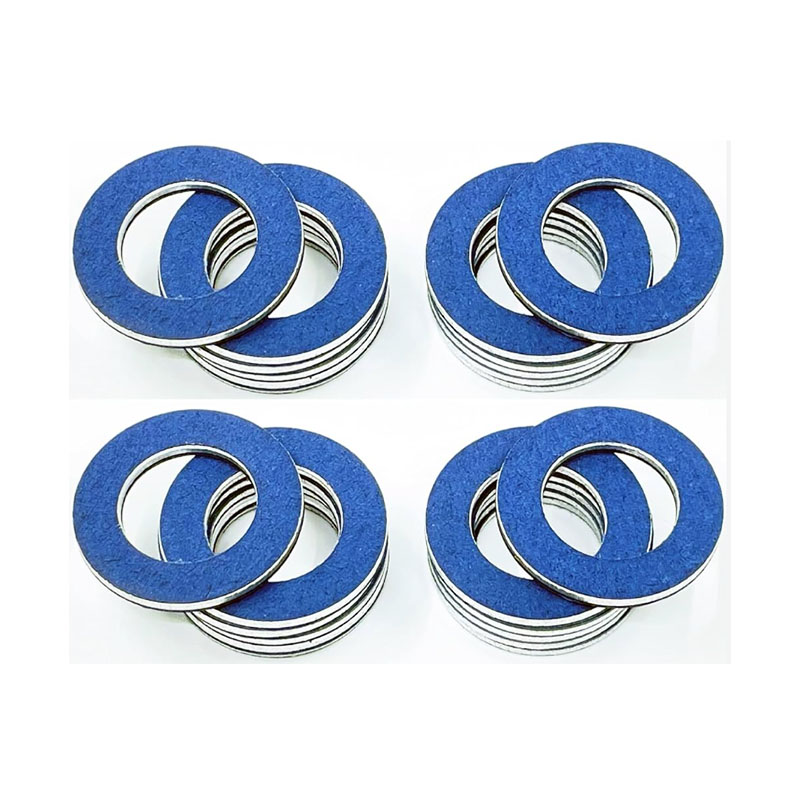oil seal ring
Understanding Oil Seal Rings An Essential Component in Machinery
Oil seal rings are vital components utilized in various mechanical systems to prevent the leakage of fluids, primarily oil, from critical machinery. These small yet essential parts play a significant role in ensuring the efficiency and longevity of machines, ranging from automotive engines to industrial equipment.
An oil seal, sometimes referred to as a shaft seal, is designed to fit snugly around a rotating shaft. It consists of a rubber or elastomer material that creates a tight seal against the shaft surface, effectively blocking fluid from escaping. This sealing mechanism is not only crucial for maintaining the required levels of lubricants within machinery but also for preventing contaminants from entering the system, which could lead to wear and damage.
The construction of oil seal rings typically includes several components a sealing lip, a spring, and a casing. The sealing lip contacts the shaft, providing the primary barrier against leaks. The spring, which can be made from stainless steel or other materials, ensures that the sealing lip maintains consistent contact with the shaft despite variations in temperature, pressure, and vibration. The casing holds the entire assembly together, ensuring that the oil seal maintains its shape and functionality throughout its service life.
oil seal ring

One of the primary advantages of using oil seal rings is their ability to operate under harsh conditions
. They are designed to withstand extreme temperatures, pressures, and the presence of different types of lubricants and fluids. This resilience makes them suitable for a wide array of applications, including automotive, aerospace, and industrial machinery. For example, in automotive engines, oil seal rings prevent engine oil from leaking out of the crankshaft or camshaft, which is crucial for engine performance and reliability.Manufacturers produce oil seal rings in various sizes and shapes to accommodate different applications. Common materials used for the sealing lips include nitrile rubber (NBR), fluorocarbon rubber (FKM), and silicone rubber, offering a range of chemical resistances and temperature tolerances. The selection of material depends on the application requirements, such as the type of fluid being sealed and the operating environment.
Despite their robustness, oil seal rings can wear out over time. Factors contributing to wear include the presence of contaminants, extreme pressure, and inadequate lubrication. Regular maintenance checks are essential to identify signs of oil seal failure, such as oil leaks or deterioration of the sealing lip. Timely replacement can prevent more significant issues within the machinery, saving time and costs in the long run.
In conclusion, oil seal rings are indispensable components that ensure the proper functioning of various mechanical systems. Their ability to prevent fluid leakage and protect internal components from contamination is crucial for the efficiency and longevity of machines. Understanding their design, function, and maintenance requirements is essential for anyone involved in machinery operation and maintenance. By ensuring that oil seal rings are in good condition, operators can maintain the longevity and reliability of their equipment.
-
Understanding the Front Main Engine Seal: Purpose, Maintenance, and Installation
News Jul.29,2025
-
Understanding O-Rings and Seal Rings: Types, Applications, and Custom Solutions
News Jul.29,2025
-
Understanding Crankshaft Oil Seals: Rear Seals, Pulley Seals, and Their Role in Engine Integrity
News Jul.29,2025
-
The Importance of Front and Rear Crankshaft Seals in Engine Performance and Oil Management
News Jul.29,2025
-
Crank Oil Seals: Functions, Types, and Cost Considerations in Engine Maintenance
News Jul.29,2025
-
A Comprehensive Guide to O-Rings and Seals: Types, Materials, and Global Applications
News Jul.29,2025
-
Mastering Diesel and Performance Engine Maintenance: A Guide to Critical Oil Gaskets
News Jul.28,2025
Products categories















